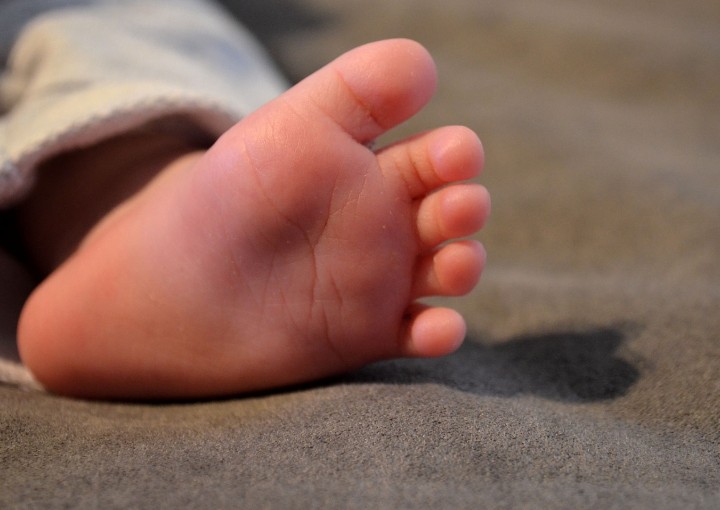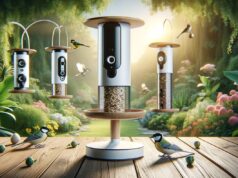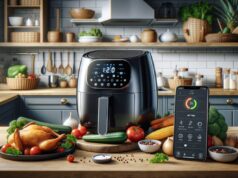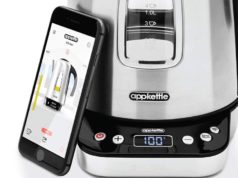We’ve written about the amazing things modern smart baby monitors can do to help you look after your newborn. While they’re packed to the hilt with cool tech to keep baby safe, there’s some things you just can’t get from a camera and microphone.
That’s where the new baby smart sock monitor comes in. It tracks up close and personal stats such as baby’s heart rate and blood oxygen level. In this guide we’re diving in to this cutting edge sock and seeing whether or not it’s worth the asking price.
What is an infant sock monitor?
And do I really want to pay £270 for a SOCK!?
If you’re new to parenting, you might not have heard of this smart little gadget before. A smart sock is obviously more than just the ‘sock’. It’s an up-close and personal baby monitor that, depending on which one you buy, can offer an interesting range of features to check on baby, or even intervene if there’s a problem.
- Monitor heart rate
- Check on Oxygen levels – Like the iWatch, these clever socks use infra-red to check this.
- Baby sleeping patterns
- Infant sleeping positions – has your baby rolled over? This is something you’ll definitely want to know about
Getting to know the smart sock
Main four components of infant foot monitors

- The sock! While it doesn’t look much like an actual sock, this is the part you slip over baby’s foot. They are designed to have different size settings to grow and stay comfy with baby. And these things are super hard for baby’s to get out of.
- The sensor – Attached to the sock is the actual sensor. This uses infra-red to capture the important specs, in the same way smart watches do. Some smart socks do more than just send data, they can wake baby up if the infant has rolled over. The sensor also relays information to the third component in the setup:
- The base unit – Most smart socks don’t just relay information direct to the cloud, or straight to your smart phone. Instead, data is normally posted to a ‘hub’ of sorts. This is normally a secure, short rage bluetooth network. The base unit on the Owlet can also give alerts without your phone.
- Your phone and the manufacturer’s app – As with just about every other bit of smart tech, your phone has an important part to play. And yup – you’ll be downloading yet another app. The app will let you monitor your baby’s important stats, as well as send you alerts if there’s a problem.

Range and connection
The sensor on the baby sock sends data via Bluetooth to the base station. So you’ll want to keep this part either in the baby’s room or as close to the nursery as possible. If your own bedroom is close by, that’s fine. The range isn’t incredibly long, but as long as you’re not taking it to the other side of a large house, you should be fine.
Your mobile phone can then connect to the base unit using your home’s Wifi connection which obviously has a much longer range than Bluetooth. That said, you will hit problems if there’s an issue with your home Wifi, router crash etc.
How accurate are baby sock like the Owlett?
The Owlet smart sock is clinically approved but how accurate is this home device, compared to the gold standard devices for measuring baby heart beats? In his review of the Owlet, Youtuber Dad Verb (below) compared the reading from the Owlet with the data from his pediatrician and compared them. While they were’t 100% accurate, they were in a slim margin of error.
Whats’ the benefits to you as a parent of a smart sock?
These baby gadgets have a lot of praise in reviews and comments, and there’s lots of stories of how a sock sensor saved a child’s life.
As Michelle Woods, an owner of the Owlet monitor explains:
“The Owlet saved my grandsons life. After the alarm going off saying his heart rate was 260 bpm, my daughters pediatrician said throw it away it’s not true the baby heart rate could get that high. Well after trying her friends owlet who is a nurse, the alarm went off again. My grandson was rushed to a children hospital and in ICU with a heart problem called SVT supra-ventricular tachycardia.”

What about oxygen levels?
Monitoring your infant’s oxygen levels (or Oxygen saturation) can be done unobtrusively with a simple finger (or foot!) sensor. It’s one tool doctors have to monitor a patients health. In baby monitors, one of the sensors used checks the amount of oxygen in the baby’s blood and gives a reading in %.
If your baby can’t breathe properly, that’s obviously something you need to know about. There can be a number of reasons a baby has low oxygen levels in their body. A simple (and terrifying) reason could be something as simple as they are face down, or a blanked could be on their face, preventing them from breathing.
Smart baby monitors will send an alert whenever they detect blood oxygen levels have dropped below a ‘normal’ range.
Problems and limitations with smart infant socks
So these products sound great, right? I mean who doesn’t want all the protection they can get for their baby? Well hold on, let’s look at some of the draw backs and limitations to baby socks you can buy today.
They’re not cheap!
As a new parent, I don’t need to tell you how much babies cost. While that sounds cynical as can be, it’s true. And every company and ad has the latest gadget that you must buy to keep your baby safe. The Owlet monitor sock , for example, is the most expensive of the bunch. You can expect to get it for under £280, but not by much. That’s a hefty investment!
Bluetooth Range limitations
While the Owlet seems to handle range well, and you’d really have to live in a castle or something like that to cause it problems, some other sock monitors we’ve seen do struggle with keeping a connection. Not what you want in a device designed to keep baby safe.
Questions over the level setting you will receive warnings at
Deciding what oxygen level or heart rate level you will be alerted of a problem at is something that’s currently set by each smart sock manufacturer. It’s also not something that you can generally adjust yourself. Some reviews by health professionals have stated that these ‘normal’ levels should be adjusted to be more in line with what clinics look at when checking a baby’s O2 and heart rate.
False alarms
Sock monitors are designed to giev you peace of mind, not send your heart racing and give you a false alert. They do happen from time to time. It’s worth noting that not everyone experiences false alerts from their smart socks, but it is something that can happen.
Another thing to charge
As well as your phone, tablet, laptop headphones, all this wireless technology means we’ve got a lot of gear to keep charged up. None more important than your new smart sock.
You know the drill. Monitor the coloured lights and plug into a USB port to keep it topped up in between baby’s naps. At least it doesn’t require batteries that need replacing.
Sock Monitor Further Reading & Resources
Here’s a review of one of the more popular baby wearables – the Owlet Sock
- Healthy children has a great article about whether or not Apnea monitors are useful in preventing SID
- Kid’s Health have some good info on monitoring oxygen saturation in baby’s here
- There’s some really compelling and interesting stories from real parents on the Owlet blog about how baby sock monitors have helped their infants







